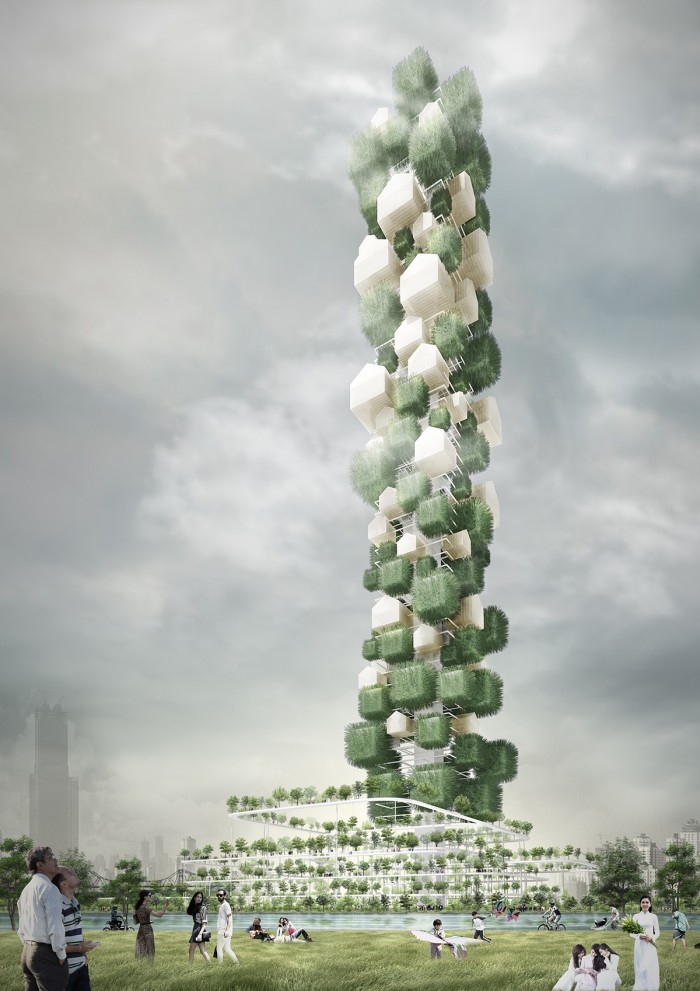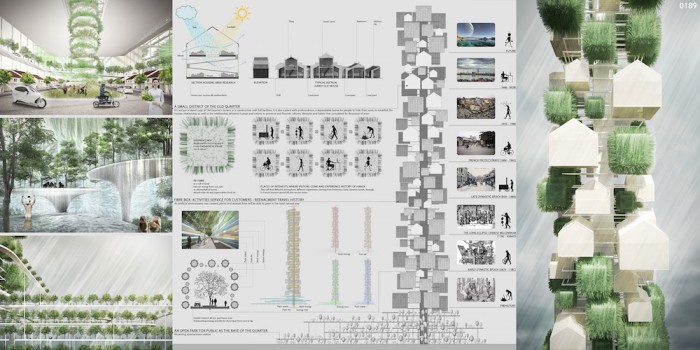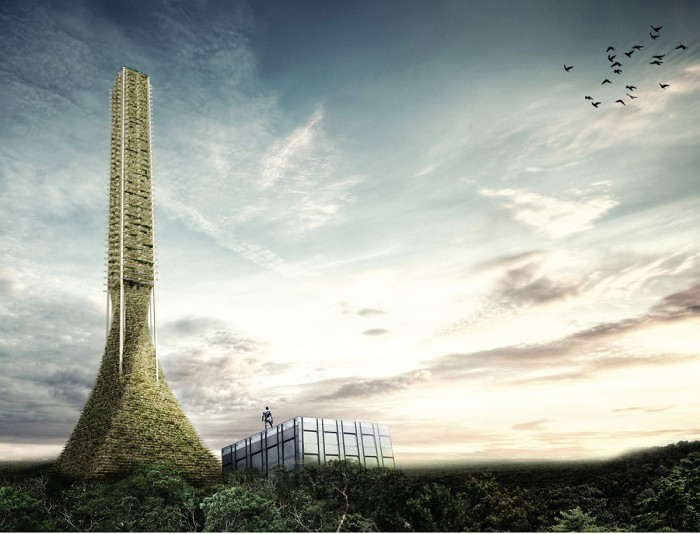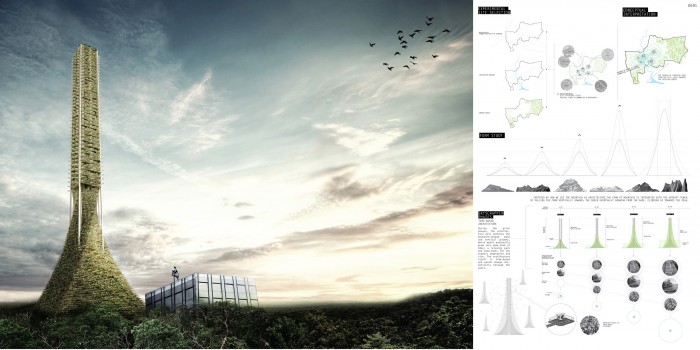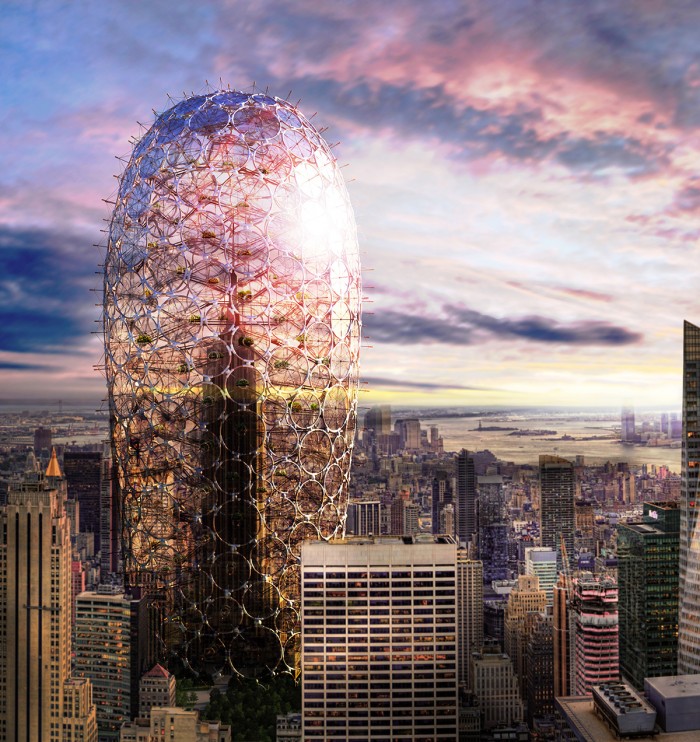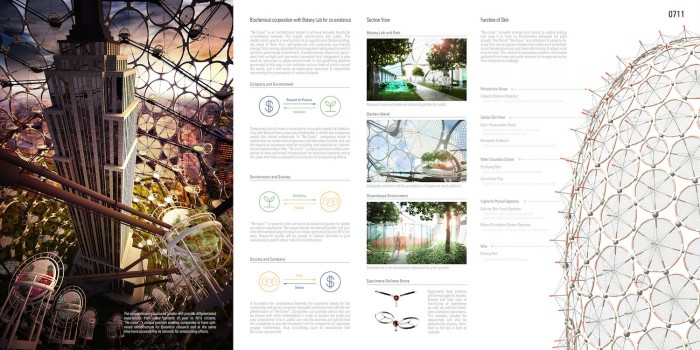The United Nations (UN) predicts that around 70 per cent of the world’s population will live in cities by the year 2050. A mass migration of this scale will exacerbate the global housing crisis. It’s clear that forward thinking or vertical-centric solutions are needed if we’re to cope with high population volumes in our city spaces. With this in mind, here are three conceptual projects that envision the vertical future of urban living.
Hanoi Vertical Tower
Vietnam’s Hanoi is known for its centuries-old architecture and rich, multi-dimensional culture. At its heart is the chaotic Old Quarter, where the narrow streets are roughly arranged by trade. According to M Architects, the expansion of the capital city has been carried out much faster than the rate at which the living conditions of its citizens can be addressed. While construction on the city’s periphery hopes to lighten the load, it will be years before the citizens of Hanoi stop pooling into its centre for work, business and entertainment.
The architects propose that the horizontal density of Hanoi be reimagined into a vertical living space that still reflects the beautiful aspects of an Old Quarter and a busy city centre.
The Tower would be a combination of two types of modules that would distribute Hanoi’s urban density in a better way. The Experience module would be distributed along the right side of the Tower, from its ground level to the top. These modules would include places of interests, where visitors come and experience History of Hanoi. The Residential module would house Hanoi’s citizens.
At the centre, a great Core connects all modules: “This Core is not only for vertical transportation; it is where technologies are integrated in order to transform energy collected from the Experience’s solar fibre and the residential area's PV fibres.”
Babel: Return to Nature skyscraper
The Return to Nature or Babel skyscraper is a little more doomsday. Conceived by Nathakit Sae-Tan, Prapatsorn Sukkaset of Thailand, this construction stems from the idea that one day, humans will have exhausted the Earth’s natural resources. We’ll be forced to turn to architecture for solutions to both the global housing crisis and agriculture.
Their dystopian future is not too far off. While environmentalists and climate change-deniers battle for space and big corporations continue to milk the world’s resources, a number of vertical farming solutions have claimed to be the future of the way we eat and live.
Re-Cover: Sustainable Skyscraper Enclosure
Most major cities are already starved for space and it would take a great deal of energy and resources to try and start over entirely. But we do need a sustainable solution to our current megastructures. South Korea's Soomin Kim and Seo-Hyun Oh’s Sustainable Skyscraper Enclosure propose that we cover existing skyscrapers in a smart skin, making them self-sufficient and connected to the Internet of Things (IoT).
“The model will use conventional buildings as resources, and it will find a new usage for them and give them purposes for the future using only the slightest efforts,” reads the project page. “The newly born buildings will use and self-produce eco-friendly energy in a sustainable cycle so that they can co-exist with the environment instead of opposing it.”

